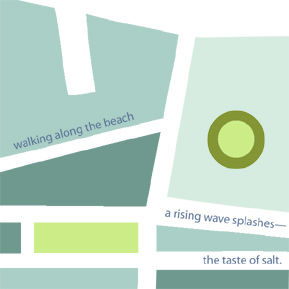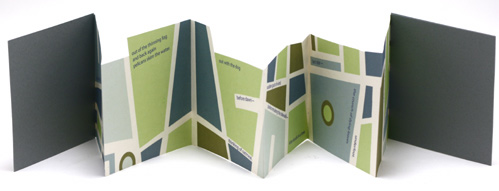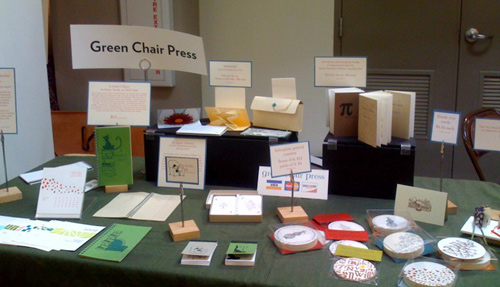
I’m awfully ambivalent about selling my books and artwork at craft and book fairs. On the plus side, I replenish my bank account and meet people who love books and reading as much as I do. On the negative side, the days can be really long and my jaw hurts at the end from smiling so much. But I’ve done enough fairs now over the years that the preparation is routine, and I’ve figured out how to pack effectively for fairs that require me to fly to get there.
 Last week-end I had a table at a 2-day book arts fair across the country from my home, in Silver Spring Maryland. I wasn’t expecting many sales, what with the screaming headlines in the papers saying this holiday season is going to be the worst ever. But my Mom, sister and brother-in-law live near by, so I thought of this as a family visit rather than a “business trip.” I kept my expenses down by staying with Mom and using my sister’s car. And my sister, who owns a bakery and went to cooking college, made yummy dinners and provided Mom & me with pastry for breakfast and cookies for lunch.
Last week-end I had a table at a 2-day book arts fair across the country from my home, in Silver Spring Maryland. I wasn’t expecting many sales, what with the screaming headlines in the papers saying this holiday season is going to be the worst ever. But my Mom, sister and brother-in-law live near by, so I thought of this as a family visit rather than a “business trip.” I kept my expenses down by staying with Mom and using my sister’s car. And my sister, who owns a bakery and went to cooking college, made yummy dinners and provided Mom & me with pastry for breakfast and cookies for lunch.
 After eating so well, maybe I was predisposed to have a good time at this particular fair. I sold more than I expected. I met several people who have written articles for Ampersand, the quarterly book arts journal I edit. When things were slow, my table mate was fun to talk to. As they looked at my books, many people commented that my work is happy and colorful and well displayed. And what fun to watch the smiles break out as people flip through my flip books!
After eating so well, maybe I was predisposed to have a good time at this particular fair. I sold more than I expected. I met several people who have written articles for Ampersand, the quarterly book arts journal I edit. When things were slow, my table mate was fun to talk to. As they looked at my books, many people commented that my work is happy and colorful and well displayed. And what fun to watch the smiles break out as people flip through my flip books!
 Back home now, the next few weeks will be hectic as I get ready for 2 more holiday fairs here at home in San Francisco — Bazaar Bizarre in Golden Gate Park, Sunday November 30, 10am-5pm, and at the San Francisco Center for the Book on Friday December 12 (6-8pm) and Saturday December 13 (12 noon-5pm).
Back home now, the next few weeks will be hectic as I get ready for 2 more holiday fairs here at home in San Francisco — Bazaar Bizarre in Golden Gate Park, Sunday November 30, 10am-5pm, and at the San Francisco Center for the Book on Friday December 12 (6-8pm) and Saturday December 13 (12 noon-5pm).
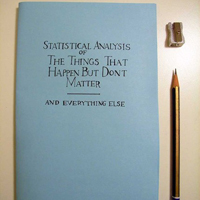 My Reader’s Diary was mentioned recently in a blog article by Sarah Nicholls of the Center for Book Arts in NYC. Top 10 Books, Zines & Comics is a good introduction to what’s on offer on Etsy. She lists 10 categories (zines, comics, diaries, journals, albums, letterpress books….) with an example of each and then a link to search for more. Check it out here. The one to the left is the zine “Stastictical Analysis of The Things That Happen But Don’t Matter” from Sarah McNeil.
My Reader’s Diary was mentioned recently in a blog article by Sarah Nicholls of the Center for Book Arts in NYC. Top 10 Books, Zines & Comics is a good introduction to what’s on offer on Etsy. She lists 10 categories (zines, comics, diaries, journals, albums, letterpress books….) with an example of each and then a link to search for more. Check it out here. The one to the left is the zine “Stastictical Analysis of The Things That Happen But Don’t Matter” from Sarah McNeil.
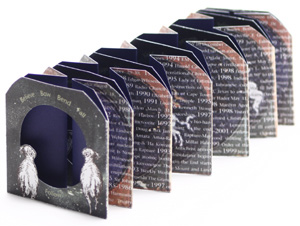
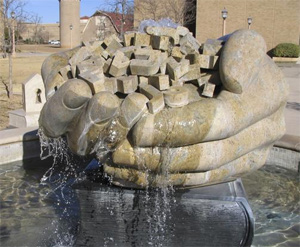 Judith Hollowood sent me a postcard with this great sculpture on the front — it’s called Headwaters by Larry Kirkland. It sits in front of the English/Philosophy complex on the Lubbock campus of Texas Tech University. (There’s another good picture
Judith Hollowood sent me a postcard with this great sculpture on the front — it’s called Headwaters by Larry Kirkland. It sits in front of the English/Philosophy complex on the Lubbock campus of Texas Tech University. (There’s another good picture  I own a 1890s letterpress, as well as several 40 year old cars, so I clearly have a weak spot for old out-dated machines. I’ve found another article about a shop that fixes typewriters (my other entry about a shop in NYC is
I own a 1890s letterpress, as well as several 40 year old cars, so I clearly have a weak spot for old out-dated machines. I’ve found another article about a shop that fixes typewriters (my other entry about a shop in NYC is 